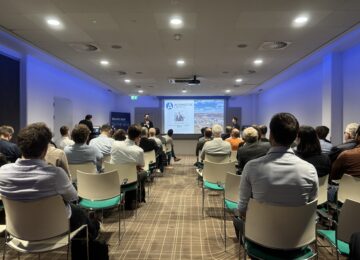Key European regulations for importers, energy storage (RfG) and consumers (DC)
The European Agency for Energy Regulators (ACER) has started changing the grid codes for connected generators on behalf of the European Commission. The reason is the decreasing share of synchronous generators in the electricity system, whose inherent inertia (inertia) has always provided a basic level of stability.
The changes involve the grid codes 'Requirements for Grid Connection of Generators.' (RfG) and 'Demand Connection' (DC), with new requirements also placed on electricity storage. The updates now explicitly include energy storage in the RfG 2.0. The requirement for energy storage will apply to both input and off-take. This will result in better harmonization in Europe. The Netherlands did previously include larger energy storage systems in the RfG 1.0.
Some essential changes were made in the NC RFG 2.0 on the following topics: Electricity Storage Module (ESM), Grid Forming, Rate of Chang of Frequency (RoCoF), significant modernization, Energy communities and on aggregation issues.
In addition, energy storage systems are divided into types depending on size. Mandatory requirements for all type B, C and D PPMs (Power Park Modules, such as solar, wind farms and storage) connected to a voltage level of 110 kV and above, as well as PPMs (>10 MW) connected directly to the medium voltage substation with transformer to 110 kV and above. Two requirements stand out:
- Grid forming (RfG): Generation units of >10 MW connected at (ultra)high voltage level, or directly to an MS/HS transformer substation, should be able to provide grid forming support to the grid (e.g. voltage support, inertia support). At the European level, the technical requirements are now being developed, a first version of which is has already been published and an update in early 2025 is expected.
- Rate of Change of Frequency (RfG & DC): To keep as many generation units and consumption facilities connected to the grid as possible, it is important that they are better able to withstand rate of change of frequency. The proposed requirements for electricity storage, among others, are:
- ±4.0 Hz/s over a period of 0.25 s,
- ±2.0 Hz/s over a period of 0.5 s,
- ±1.5 Hz/s over a period of 1 s, and
- ±1.25 Hz/s over a period of 2 s;
There is an implementation period of 3 years after publication (expected in early 2025). TSOs recognize the need for a 3-year implementation period for non-exhaustive requirements, where a member state is required to obtain national approval for the selection, consultation and implementation of these requirements. However, there is a need for a faster implementation pathway for the exhaustive requirements. Energy Storage NL continues to monitor code developments through involvement in the developments of the implementation roadmap to be made next year.





